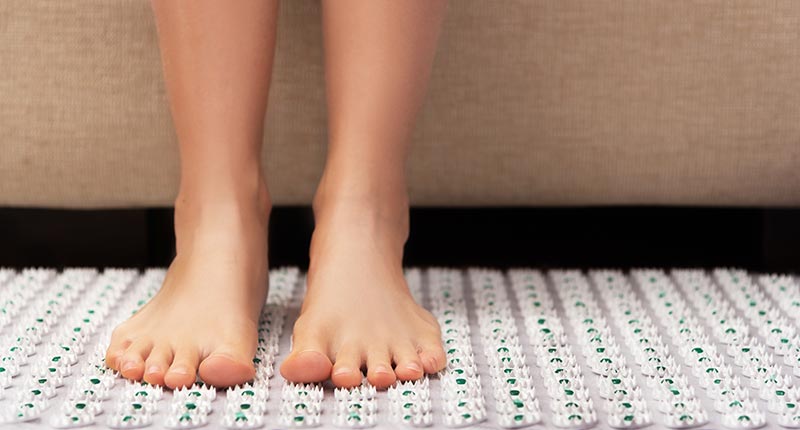Seborrheic dermatitis is a common skin disorder that primarily impacts the face and scalp, producing scaly patches, red itchy skin, and often dandruff. Fortunately, acupressure for seborrheic dermatitis is a promising treatment, and other skin disorders benefit from this traditional Chinese medicine practice.
Scientists have observed the effect acupuncture has on skin disorders. Recent studies have shown that acupuncture can strongly benefit skin conditions such as acne. It can also help kill microorganisms and provide relief of inflammation.
Other sources have found that acupressure can help treat skin conditions such as eczema. While further research is in the works, results have shown acupressure can help reduce itchiness. A great benefit of acupressure is that it does not cause puncture wounds in the skin.
However, acupuncture can also be used to treat uncomfortable skin conditions such as Atopic dermatitis. Acupuncture has a positive effect in reducing inflammation in the skin. It increases levels of serotonin production that can also help other aspects of the immune system.
Accupressure Points For Seborrheic Dermatitis
Acupoint: KI-1 (Other Names: Kidney-1/Yong Quan/Gushing Spring)
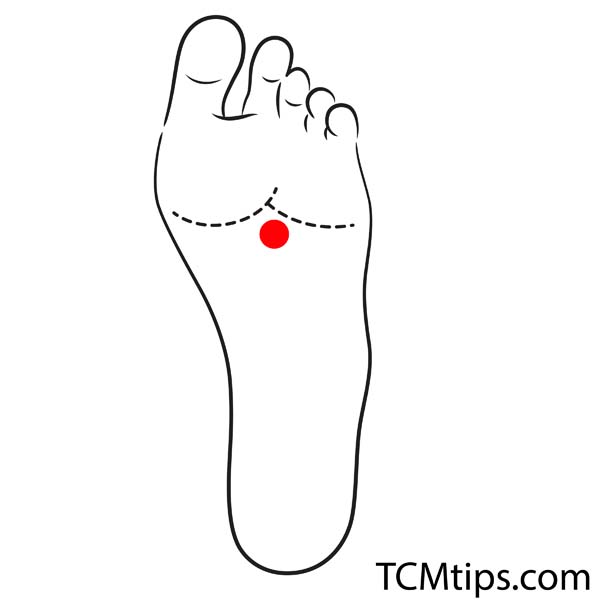
Also known as the Kidney 1 acupuncture point, the KI-1 acupoint is perfect for relieving seborrheic dermatitis symptoms. It is located underneath the bottom of your foot. To find this pressure point, flex your foot so that all toes are pointing upwards.
Acupoint KI-1 sits within the depression of your foot, about a quarter down from the base of the toes. You can flex your foot by standing up on the tip of your toes. To activate this pressure point, apply light pressure and massage in a circular motion.
Not only is this ideal for acupressure for skin health, but KI-1 is also one of the pressure points to increase energy. Not to mention, it helps improve your overall physical strength and recovery from fatigue.
Acupoint: LI-4 (Other Names: Large Intestine-4/He Gu/Joining Valley)

Pressure point LI-4 helps improve blood circulation throughout the blood, which can only do well for the skin. To locate this acupoint, find the web of skin between your pointer finger and thumb. You might have to dig a little deep near the muscle and bone where you feel a soft indent.
To activate this pressure point, apply firm pressure using your opposite thumb for a few seconds. This will help soften the symptoms of skin conditions such as seborrheic dermatitis.
LI-4 is also one of the best acupressure points to stay awake as it affects the head and brain. Additionally, it helps strengthen the circulation in the hands.
Acupoint: LI-11 (Other Names: Large Intestine-11/Qu Chi/Pool at the Crook)
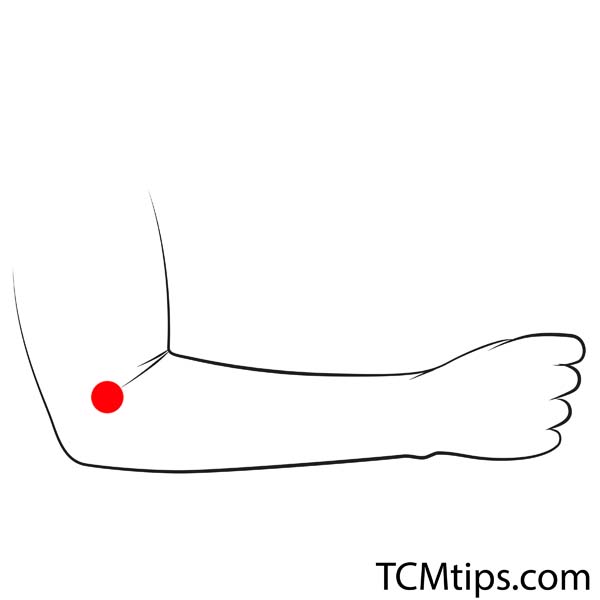
In addition to being one of the acupressure points to reduce arm fat, acupoint LI-11 can help improve skin disorders. It helps regulate blood flow and reduces swelling in the arms.
Pressure point LI-11 sits at the outer crook of the elbow when the elbow is bent or flexed. Activating this particular point might bring some minor discomfort, but that is entirely normal and varies per person.
Apply firm pressure using your thumb directly on the point to get the most out of this acupoint. Your pointer finger should apply pressure to the other side of the arm, forming a wide pinching motion.
Acupoint: GB-14 (Other Names: Gallbladder-14/Yang Bai/Yang White)
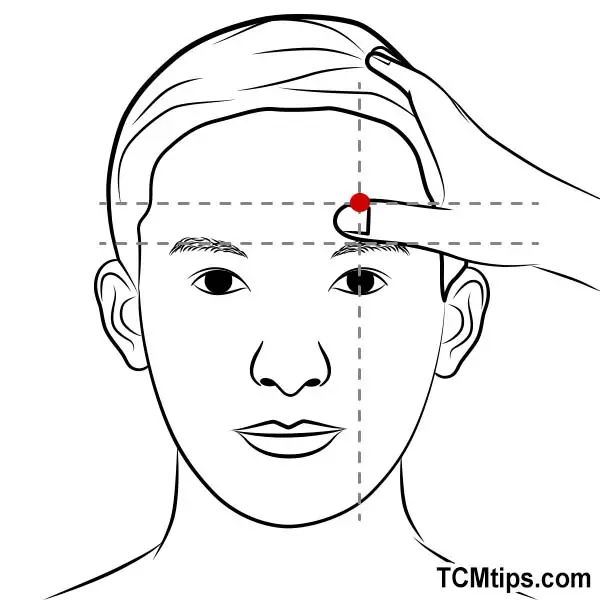
Another pressure point to help alleviate seborrheic dermatitis is GB-14, also known as Yangbai in Chinese. This acupoint is located above the center of the eyes, precisely one thumb width from the top of your eyebrows. It controls the oil balance, which in turn prevents the symptoms of seborrheic dermatitis.
This pressure point can serve many other purposes, including being one of the acupressure points on the face for glowing skin. It helps promote the flow of blood throughout the face and improves the overall dullness of the skin. Additionally, this pressure point can help treat blurry vision, facial paralysis, vertigo and reduce the chance of allergies.
Acupoint: ST-2 (Other Names: Stomach-2/Si Bai/Four Whites)
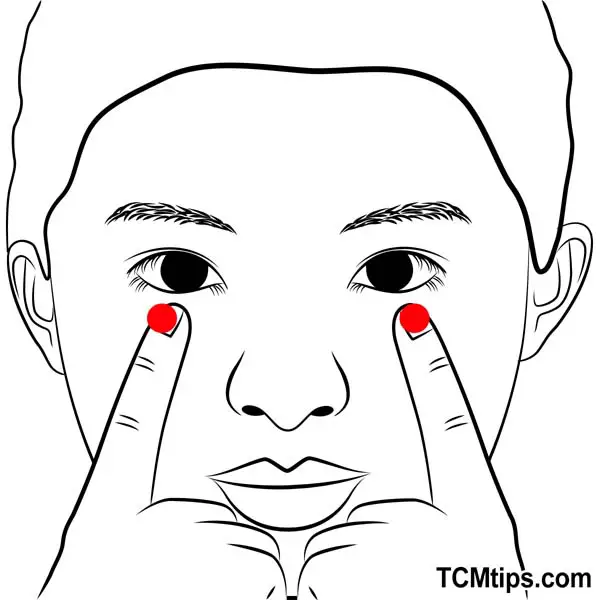
Like the GB-14 Pressure point, acupoint ST-2 can control the oil balance in your face, and Chinese doctors recommend massaging daily. Regularly activating this pressure point will help prevent recurring symptoms of skin disorders. It has become popular among acupressure for seborrheic dermatitis.
This acupoint is located on the face at the indentation of the cheek, directly underneath your bottom eyelid. ST-2 is perfect for practicing facial acupressure points for dark circles and can help with dry, itchy eyes and any pain in the face.
To activate, use a finger to trace the acupoint and massage gently. Try not to apply too much pressure as this is a sensitive area of the face.
 P. Sze
P. Sze 




